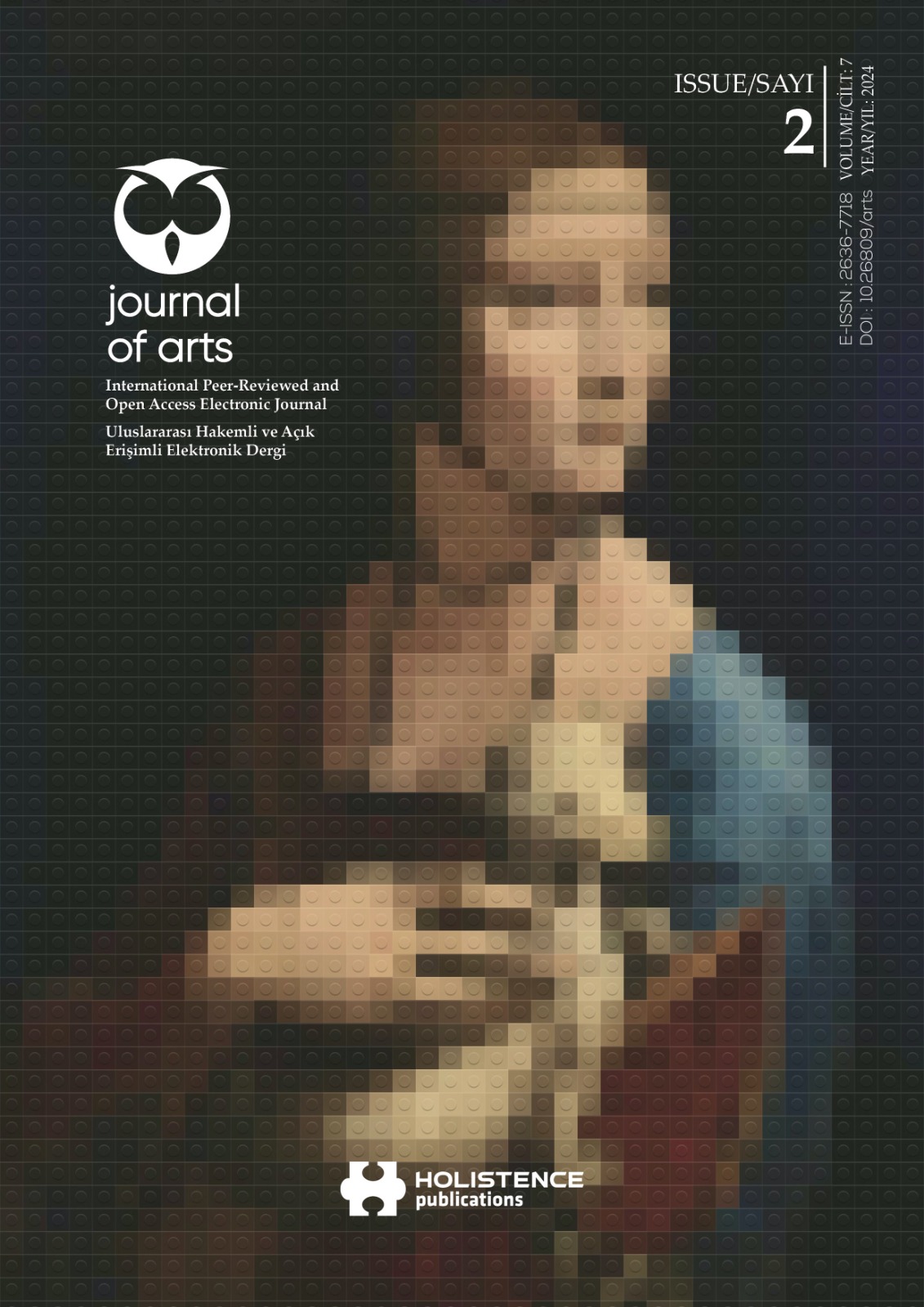The narrative becomes theatrical
DOI:
https://doi.org/10.31566/arts.2387Keywords:
Narrative, Dramatic Structure, Epic, Postdramatic, Contemporary TheatreAbstract
Theatre, especially in the West, has been approached from a mimetic (representational) perspective rather than a diegetic (narrative) perspective, and diegesis (narrative) has been left outside the boundaries of the art of theatre since Aristotle’s Poetics. In the process that has been going on since the 20th century, some searches to capture a live experience, especially in the stage-viewing area and actor-audience relations, began to focus on the issue of narrative in theatre. Brecht’s epic theatre theory, which includes the narrative in which he reopens the storytelling line and the periodic transformation of the narrative that is called back to the stage with Lehmann’s postdramatic conceptualization, radically took both theatre and performance beyond their classical definitions in theatre history. The main phenomenon that determines the characteristic of narrative in theatre lies somewhere beyond its relationship, in the fact that it destroys the aesthetic superiority of the dramatic structure and establishes an alternative, together with the economic and social conditions of the new age. This study aims to illustrate the course of the ‘narrative’ at important turning points such as the Ancient, Epic and Postdramatic periods through narrative strategies. Method: In this study, the method of grading the transfer from theory to practice for the use of narrative in theatre practices was taken as a methodological basis. Conclusion: It is seen that the art of our age, which defines life as an experience, replaces the narrative at the center. It seems that this experience stems from the popular trend of narrative stories in the application field of theatre, as well as the search for a new word, a new contact to be established with the audience.
Downloads
References
ARİSTOTELES. (2007). Poetika. (Samih Rifat, Çev.) İstanbul: Can Sanat Yayınları.
BENJAMİN, W. (2014). Hikâye Anlatıcısı. W. Benjamin içinde, Son Bakışta Aşk ( Nurdan Gürbilek, Çev.). İstanbul: Metis Yayıncılık.
BERTOLT, B. (1993). Tiyatro İçin Küçük Organon (A. Cemal, Çev.). İstanbul: Mitos Boyut Yayınları.
BERTOLT, B. (1954). Kafkas Tebeşir Dairesi (Yılmaz Onay, Çev.). İstanbul 2014.
CANDAN, A. (2013). Öncü Tiyatro ve Dijital Çağda Gösterim, İstanbul: Bilgi Üniversitesi Yayınları.
DENNIS, K. (2018). Kızlar ve Oğlanlar (Gözde Kırgız, Çev.). Oberon kitapçılık (yayınlanmamış tiyatro metni).
DERVİŞCEMALOĞLU, B. (2014). Anlatıbilime Giriş: Dergah Yayınları.
ESEN, U. (2017). Johann Wolfgang Von Goethe’nin Faust Adlı Oyununun Çağdaş Bir Meddah Performansı Olarak Uygulanması ve Sahnelenmesi, Sanatta Yeterlilik Tezi, Eskişehir Anadolu Üniversitesi.
JAHN, M. (2001). Narrative Voice and Agency in Drama, Aspects of a Narratology of Drama Cilt. 32, Sayı. 3, s. 659-679 (21 sayfa).
JAMESON, F. (1998). Brecht and Method, British Library Cataloguing in Publication Data, New York.
KALKAN KOCABAY, H. (2003). Dramaturjide Yeni Açılımlar, Tiyatro Eleştirmenliği ve Dramaturji Bölümü Dergisi, Sayı: 3, 3-18 s. 7.
LİCHTE, F. E. (2016). Performatif Estetik, (Tufan Acil Çev.), İstanbul: Ayrıntı Yayınları.
LEHMANN, T. H. (2006). Postdramatic Theatre. Çev: Karen Jürs-Munby, Routledge, New York.
MARX,K. (2003). Kapital (Alaattin Bilgi, Çev.) Cilt.1 Eriş yayınları üçüncü basım. Yer belirtilmemiş.
ÖZCAN, C. (2014). Çağdaş Tiyatroda Anlatının Sahneye Çağrılması: Tiyatrotem Üzerine, Yüksek Lisans Tezi.
KARACABEY, S. (2007). Modern Sonrası Tiyatro ve Heiner Müller. Ankara: De Ki Basım Yayım.
PUCHNER, M. (2002). Stage Fright: Modernism, Anti-Theatricality, and Drama. Baltimore & London: The Johns Hopkins University Press.
RANCİERE, J. (2010). Özgürleşen Seyirci. İstanbul: Metis Yayınları.
RİCHARDSON, B. (1988) Point of View in Drama: Diegetic Monologue, Unreliable Narrators, and the Author's Voice on Stage. Comparative Drama, Western Michigan University, Volume 22/3, s. 193-214.
SARIKARTAL, Ç. (2010). Klasik Metinleri Bugün Buradan Anlatmak. Tiyatro Araştırmaları Dergisi, Sayı 29, s.67-80.
SWETTENHAM, N. (2003). The Role and Status of Narrative in Contemporary Theatre. Doktora Tezi, Montfort University.
TORAMAN, C. (2019). Anlatılan Senin Hikayendir. İstanbul: Biz Kitap.
WEHRMANN, J. (2004). Irish Tradition or Postdramatic İnnovation? Storytelling in Contemporary Irish Plays ZAA 52.3, s-243-256
Additional Files
Published
How to Cite
Issue
Section
License
Copyright (c) 2024 Holistence Publications

This work is licensed under a Creative Commons Attribution 4.0 International License.
When the article is accepted for publication in the Journal of Arts, authors transfer all copyright in the article to the Rating Academy Ar-Ge Yazılım Yayıncılık Eğitim Danışmanlık ve Organizasyon Ticaret Ltd. Şti.The authors reserve all proprietary right other than copyright, such as patent rights.
Everyone who is listed as an author in this article should have made a substantial, direct, intellectual contribution to the work and should take public responsibility for it.
This paper contains works that have not previously published or not under consideration for publication in other journals.









